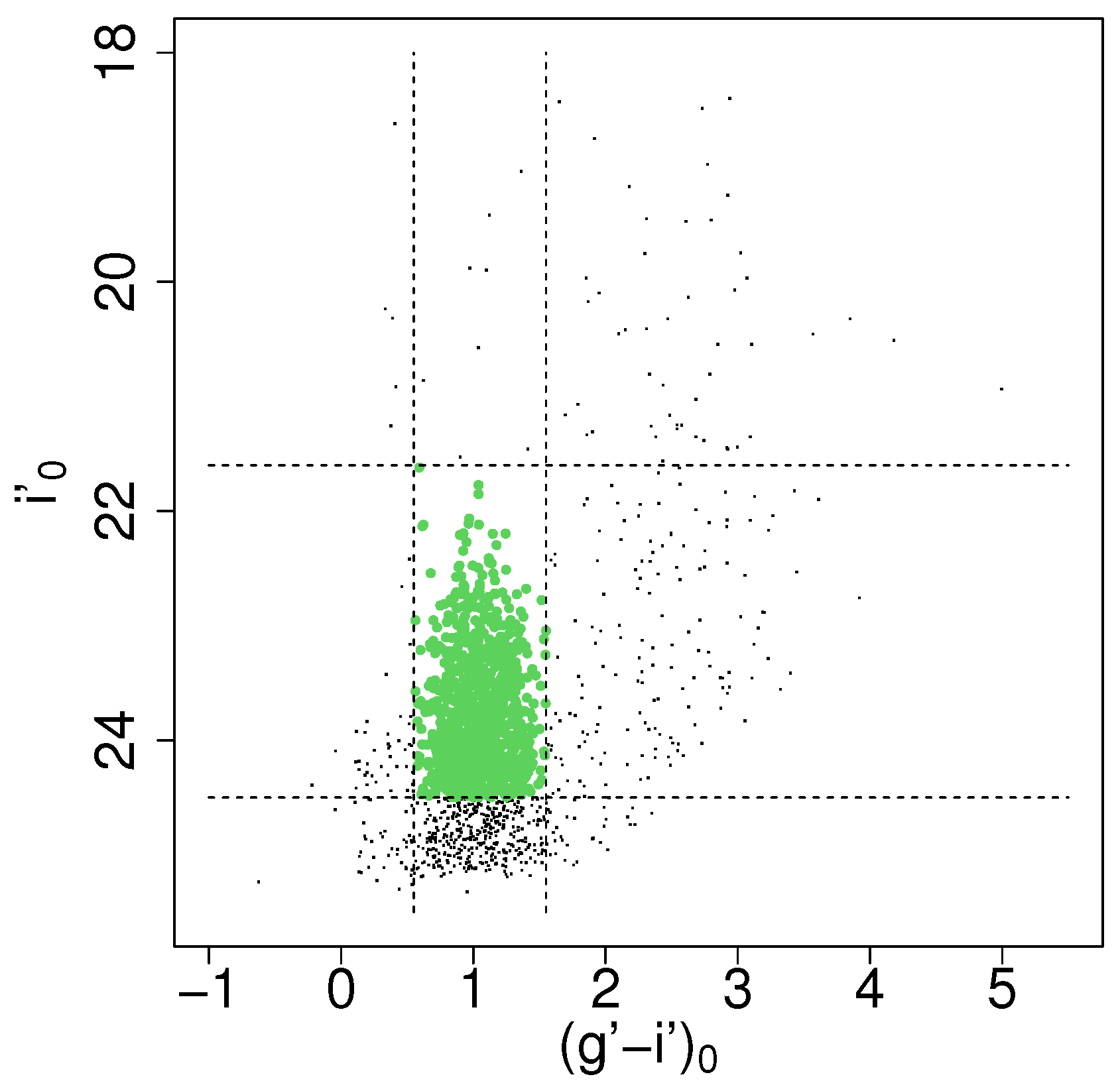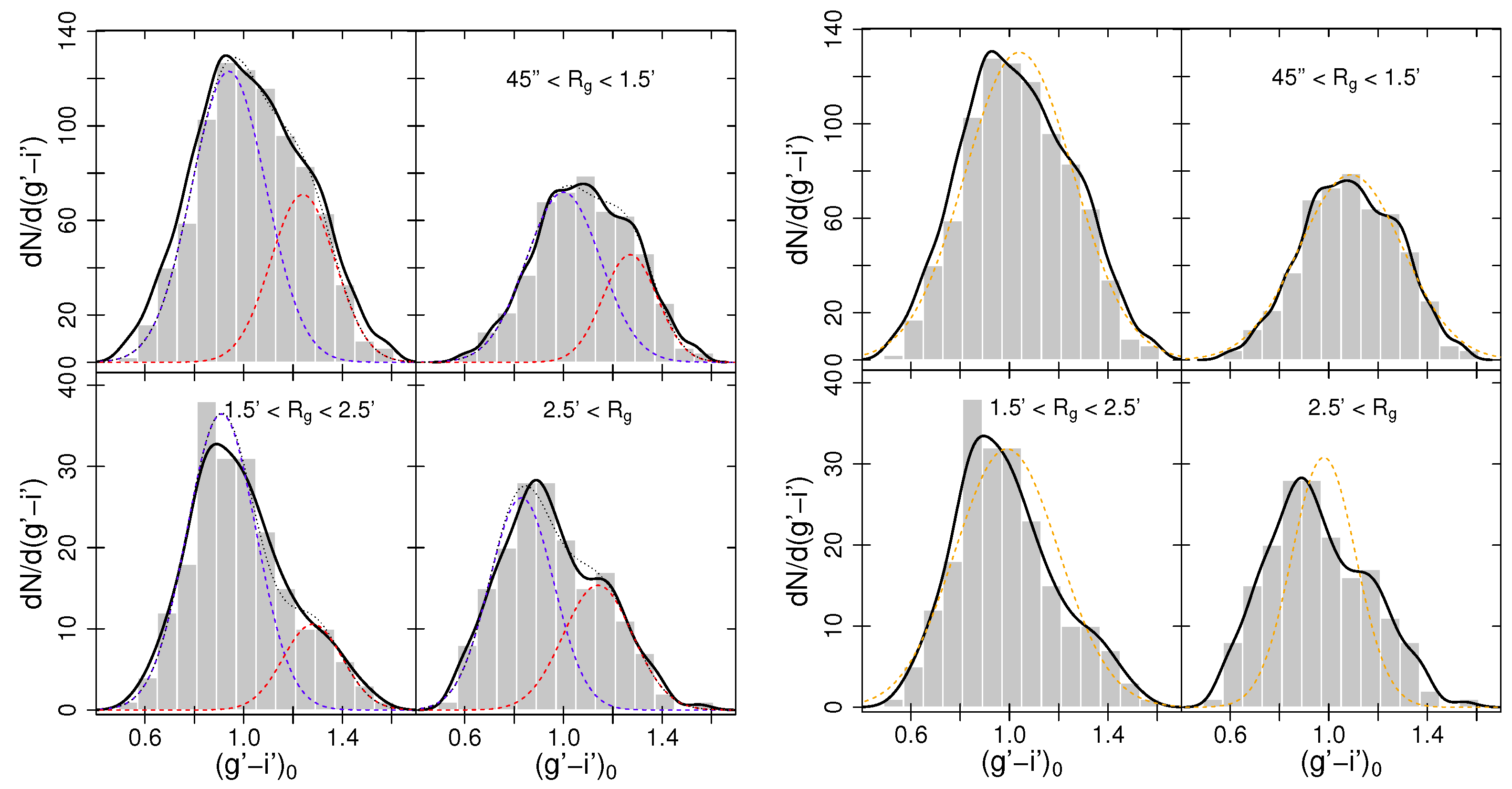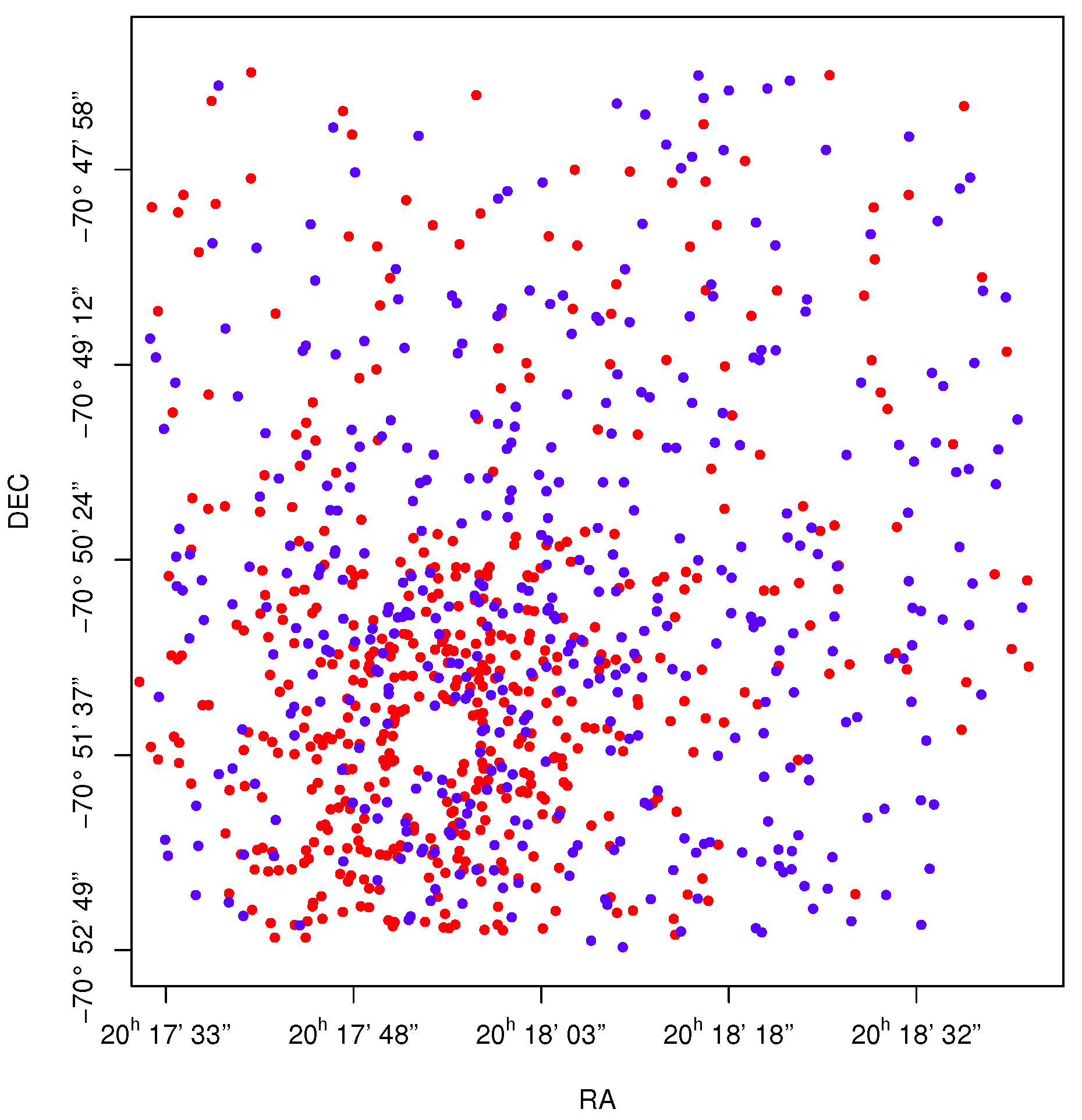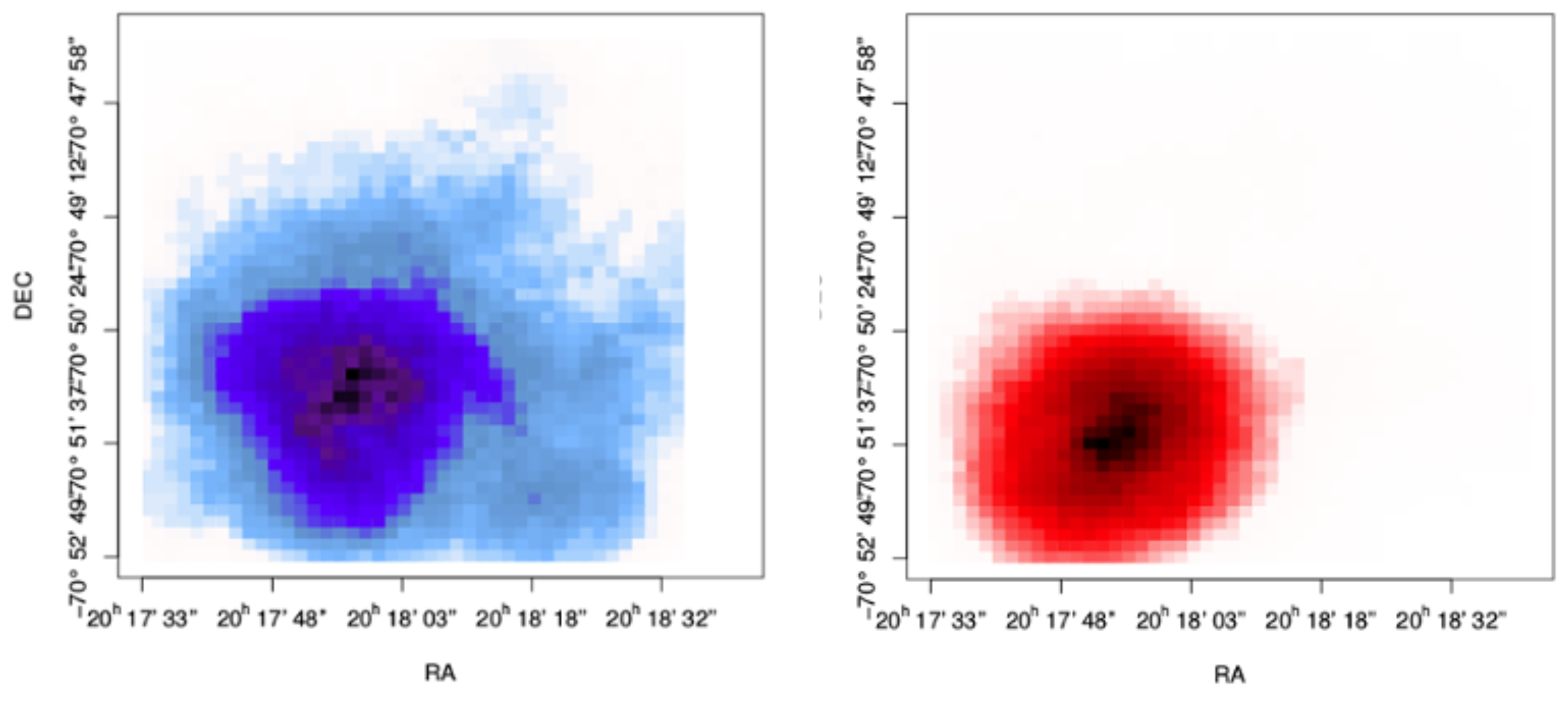The Globular Cluster System of the Galaxy NGC 6876
Abstract
:1. Introduction
2. Materials and Methods
3. Results
Acknowledgments
Author Contributions
Conflicts of Interest
Abbreviations
| GC | Globular Cluster |
| PSF | Point Spread Function |
| GOA | Gemini Observatory Archive |
References
- Mendel, J.T.; Proctor, R.N.; Forbes, D.A. The age, metallicity and α-element abundance of Galactic globular clusters from single stellar population models. Mon. Notic. Roy. Astron. Soc. 2007, 379, 1618–1636. [Google Scholar] [CrossRef]
- Tonini, C. The Metallicity Bimodality of Globular Cluster Systems: A Test of Galaxy Assembly and of the Evolution of the Galaxy Mass-Metallicity Relation. Astrophys. J. 2013, 762, 39. [Google Scholar] [CrossRef]
- Bassino, L.P.; Caso, J.P. The merger remnant NGC 3610 and its globular cluster system: A large-scale study. Mon. Notic. Roy. Astron. Soc. 2017, 466, 4259–4271. [Google Scholar] [CrossRef]
- Brodie, J.P.; Strader, J. Extragalactic Globular Clusters and Galaxy Formation. Annu. Rev. Astron. Astrophys. 2006, 44, 193–267. [Google Scholar] [CrossRef]
- Blakeslee, J.P.; Lucey, J.R.; Barris, B.J.; Hudson, M.J.; Tonry, J.L. A synthesis of data from fundamental plane and surface brightness fluctuation surveys. Mon. Notic. Roy. Astron. Soc. 2001, 327, 1004–1020. [Google Scholar] [CrossRef]
- Machacek, M.E.; Nulsen, P.; Stirbat, L.; Jones, C.; Forman, W.R. XMM-Newton Observation of an X-ray Trail between the Spiral Galaxy NGC 6872 and the Central Elliptical Galaxy NGC 6876 in the Pavo Group. Astrophys. J. 2005, 630, 280–297. [Google Scholar] [CrossRef]
- Machacek, M.; Ashby, M.L.N.; Jones, C.; Forman, W.R.; Bastian, N. A Multiwavelength View of Star Formation in Interacting Galaxies in the Pavo Group. Astrophys. J. 2009, 691, 1921–1935. [Google Scholar] [CrossRef]
- Bassino, L.P.; Faifer, F.R.; Forte, J.C.; Dirsch, B.; Richtler, T.; Geisler, D.; Schuberth, Y. Large-scale study of the NGC 1399 globular cluster system in Fornax. Astron. Astrophys. 2006, 451, 789–796. [Google Scholar] [CrossRef]
- Smith, J.A.; Tucker, D.L.; Kent, S.; Richmond, M.W.; Fukugita, M.; Ichikawa, T.; Hamabe, M. The u’g’r’i’z’ Standard-Star System. Astron. J. 2002, 123, 2121–2144. [Google Scholar] [CrossRef]
- Bertin, E.; Arnouts, S. SExtractor: Software for source extraction. Astron. Astrophys. Suppl. Ser. 1996, 117, 393–404. [Google Scholar] [CrossRef]
- Faifer, F.R.; Forte, J.C.; Norris, M.A.; Bridges, T.; Forbes, D.A.; Zepf, S.E.; Sharples, R.M. Gemini/GMOS imaging of globular cluster systems in five early-type galaxies. Mon. Notic. Roy. Astron. Soc. 2011, 416, 155–177. [Google Scholar] [CrossRef]
- Mieske, S.; Hilker, M.; Infante, L.; Jordán, A. Spectroscopic Metallicities for Fornax Ultracompact Dwarf Galaxies, Globular Clusters, and Nucleated Dwarf Elliptical Galaxies. Astron. J. 2006, 131, 2442–2451. [Google Scholar] [CrossRef]
- Muratov, A.L.; Gnedin, O.Y. Modeling the Metallicity Distribution of Globular Clusters. Astrophys. J. 2010, 718, 1266–1288. [Google Scholar] [CrossRef]





© 2017 by the authors. Licensee MDPI, Basel, Switzerland. This article is an open access article distributed under the terms and conditions of the Creative Commons Attribution (CC BY) license (http://creativecommons.org/licenses/by/4.0/).
Share and Cite
Ennis, A.I.; Bassino, L.P.; Caso, J.P. The Globular Cluster System of the Galaxy NGC 6876. Galaxies 2017, 5, 30. https://doi.org/10.3390/galaxies5030030
Ennis AI, Bassino LP, Caso JP. The Globular Cluster System of the Galaxy NGC 6876. Galaxies. 2017; 5(3):30. https://doi.org/10.3390/galaxies5030030
Chicago/Turabian StyleEnnis, Ana Inés, Lilia Patricia Bassino, and Juan Pablo Caso. 2017. "The Globular Cluster System of the Galaxy NGC 6876" Galaxies 5, no. 3: 30. https://doi.org/10.3390/galaxies5030030



